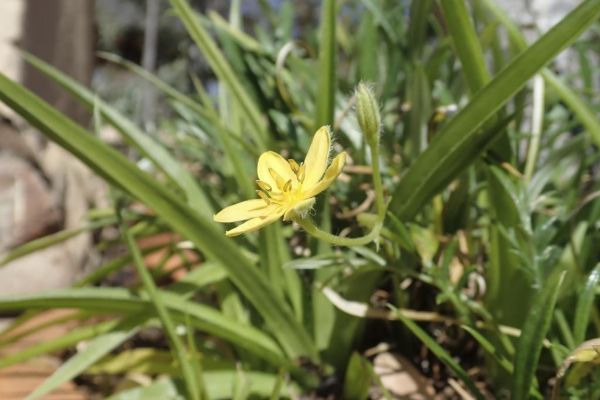200,000 years ago, the caves that dot the South African coast provided a refuge in which the first humans could thrive. With the sea at their feet and abundant flora and fauna around them, some of the first anatomically modern Homo sapiens populations evolved over 100,000 years.
As proof, they left the shells they used as decoration, drew symbols on the walls and made tools with animal bones. Now, the remains of charred plants that have just been found in one of these caves are added to this evidence. The finding, published today in Science , sheds valuable new light on the first culinary experiments of those people.
Knowing the diet of the first sapiens is essential to understand the evolution of hominids. The hunting and meat consumption strategies of our ancestors have been studied in greater detail than that of vegetables, since the bones and stone tools left by the game are preserved much better than organic remains.
However, scientists believe that carbohydrate-rich plants were also part of the feeding of these hominids. In fact, they are likely to contribute to the development of their brain and cognitive ability.
The newly found presence of rhizomes - the horizontal stems that some plants develop underground - in the Border cave of South Africa now supports this idea. It is one of the oldest testimonies of the consumption of carbohydrates, one of the basic nutrients of modern diets.
Specifically, the ashes found in the South African cave belong to the genus Hypoxis , a type of small plants that grow throughout the southern African continent, such as star lilies or the African potato ( Hypoxis hemerocallidea ).
"Carbohydrates are important for the brain, people need to consume about 100 grams a day for good brain function," explains Lyn Wadley, lead author of the article and professor at the School of Geography, Archeology and Environmental Studies at the Institute of Studies Evolutionary of the University of the Witwatersrand, in South Africa.
"In addition, there were animal remains in the place, so we know they ate meat and starch, which means that these people consumed a balanced diet 170,000 years ago," that is, in the Middle Stone Age.
Cognitive ability
In this way, the plants would have offered an accessible and easily transportable alternative food for humans in the Middle Palaeolithic. "They took the rhizomes to their cave, where they could share them with other members of the group, probably with elders and children who could not pick them up for themselves," says the researcher.
That ability to resist the temptation of an immediate reward - known by the term of postponed gratification - is a characteristic that points to complex cognition. "An animal would have eaten it at the time. The mere fact of transporting and cooking the rhizomes indicates that they had a cognition like ours, " adds Wadley.
Plants called geophytes - such as onions, potatoes or ginger - store hydrates for a long time, thanks to the growth of starch roots underground. This part, nutritious and durable, can be eaten raw, although it is much softer once cooked.
"It is significant that 170,000 years ago people already cooked the rhizomes, because this allows for a greater release of glucose and, therefore, better nutrition. When cooked it also breaks down the fiber, which makes the rhizome easier to chew. and digest, "says Wadley.
Takeaway
The study adds to a series of findings that have appeared in recent years about the evolution of the diet in Prehistory. Cooking food - a process that includes not only heating, but also actions such as chopping or grinding - greatly reduces the work needed for digestion , so that more energy is extracted from food and with less expense.
When cooking, the collagen, connective tissue of the meat, is broken down and the cell walls of the plants are softened, thus freeing up their reserves of starch and fat. From an evolutionary point of view, it is believed that the extra calories that allowed to increase the brain of successive hominid species were achieved to the detriment of intestinal tissue.
Therefore, the trunk of the sapiens is much narrower than the wide rib cage of other primate species. In addition, cooking left more free time : it is estimated that other great apes spent four to seven hours a day just chewing.
In this way, it is believed that food processing would have played an important role in our evolution. However, specifying the exact origin of this cooking ability is problematic (as is the determination of the exact moment in which hominids dominated the fire), due to the lack of material evidence.
In 2016, Israeli researchers found roasted nuts, tubers and seeds about 780,000 years ago at the Gesher Benot Ya'aqov site, long before the first sapiens appeared.
Another recent finding, also in South Africa, proved that Mosselbaai sapiens already consumed seafood cooked at least 165,000 years ago. The diversification tests of the diet advance in parallel to the chronology that leads to the modern human being, proof of greater sophistication and adaptability to new environments.
"Another significant aspect of the consumption of rhizomes is that they are widespread throughout the continent and, therefore, could provide safe food to people traveling across Africa," Wadley concludes.
According to the criteria of The Trust Project
Know more- science
- Science and Health
CLIMATE CRISIS This is how tourism kills the planet: the economic challenges facing climate change
Climate crisis Climate Weather: Minister Celaá wants a subject on climate change
Climate crisis Teresa Ribera: "We have 10 years left to avoid the climate catastrophe"

